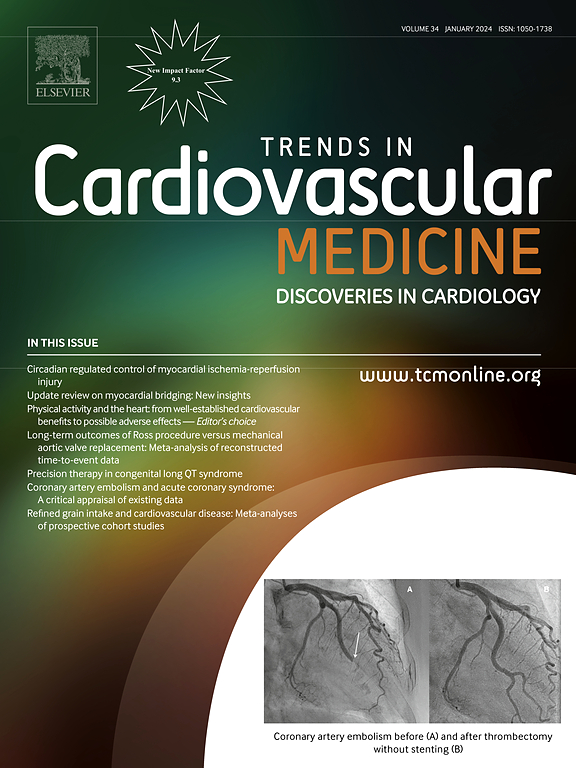肾脏去神经化的现状与未来:回顾。
IF 7.3
2区 医学
Q1 CARDIAC & CARDIOVASCULAR SYSTEMS
引用次数: 0
摘要
将肾脏去神经作为治疗高血压难治症的一种选择已经有几十年的历史,最近美国食品及药物管理局又批准了新的微创设备。然而,虽然肾脏去神经化有可能改善高血压的治疗,但在广泛采用之前还需要考虑一些挑战。与假性控制相比,其效果并不明显,一般与添加单一降压药的效果相似。随着技术的进一步完善,可能会产生更大的效果。除了肾脏去神经支配技术本身的方向、优势和局限性之外,需要考虑的关键因素还包括对获益最大的患者群体以及预测更大反应的表型或生物标志物的了解。本综述除了介绍高血压管理和治疗背景下肾脏去神经支配的现状和未来外,还对这些挑战提供了最新信息。本文章由计算机程序翻译,如有差异,请以英文原文为准。
The current state and future of renal denervation: A review
Renal denervation as an option for difficult to treat hypertension has been a concept for several decades, with recent U.S. FDA approval of new, minimally invasive devices. However, while renal denervation has the potential to improve hypertension management, several challenges require consideration prior to widespread adoption. The effect relative to sham control is modest, and generally similar to addition of a single blood pressure lowering medication. It is possible that with additional technique refinement greater effects may be possible. Key factors to consider beyond the direction, strengths, and limitations of the renal denervation technologies themselves, are an understanding of patient groups that derive greatest benefit and phenotypes or biomarkers that predict greater response. This review provides an update on these challenges in addition to the current state and future of renal denervation within the context of hypertension management and treatment.
求助全文
通过发布文献求助,成功后即可免费获取论文全文。
去求助
来源期刊

Trends in Cardiovascular Medicine
医学-心血管系统
CiteScore
18.70
自引率
2.20%
发文量
143
审稿时长
21 days
期刊介绍:
Trends in Cardiovascular Medicine delivers comprehensive, state-of-the-art reviews of scientific advancements in cardiovascular medicine, penned and scrutinized by internationally renowned experts. The articles provide authoritative insights into various topics, encompassing basic mechanisms, diagnosis, treatment, and prognosis of heart and blood vessel disorders, catering to clinicians and basic scientists alike. The journal covers a wide spectrum of cardiology, offering profound insights into aspects ranging from arrhythmias to vasculopathies.
 求助内容:
求助内容: 应助结果提醒方式:
应助结果提醒方式:


